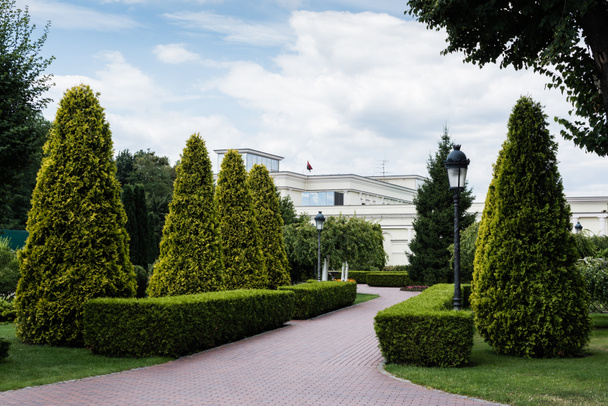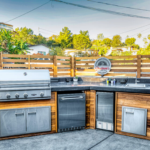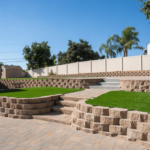Transform Your Outdoor Space
An unremarkable outdoor area can be transformed into a compelling haven of beauty and tranquility by a well-designed landscape. Whether it’s a little balcony or a large backyard that you want to design, a beautiful landscape demands skill, planning, and knowledge of the particular characteristics of your area. Keep reading this article and you will find the 10 most important things that can help you assist in making the best landscape design. They will help you express yourself and your taste in the most aesthetic way possible.
-
Vision and Goals
Before starting your landscape project or any landscaping project it is important to take your time to define your vision and goals. Ask yourself all the necessary questions like what do you want to achieve with your outdoor space? Furthermore, also questions like are you looking to create a relaxing retreat, a vibrant garden, or a space for outdoor entertainment? Therefore, by having clear objectives you will have a guide for the entire design process. This will make sure that the end result perfectly aligns with your desires.
-
Analyze Space
For a successful landscape design understanding the characteristics of your space is very important. Every landscape is unique, therefore everything should be factored in. Therefore, consider all the factors like the size and shape of the area, the amount of sunlight it will receive, and if there are any existing natural elements like trees or water features. This analysis will allow you to make informed and proper decisions about all of your choices like plants, layout, and the placement of functional elements.
-
Functionality
Although, everyone would want to have a visually appealing landscape design the functionality of the space is also very essential. Go ahead by dividing your outdoor spaces into zones based on their intended use. For example add areas for dining, lounging, gardening, and other activities you want to have in your landscape. These strategic divisions will help you navigate through the space and make it more organized while catering to all your practical needs too.
-
Elements of Design
The principles of design have a great role to play in landscape aesthetics. Elements like balance, contrast, rhythm, unity, and focal points create a harmonious and visually pleasing layout. It’s important to strive for a balance between hardscape and softscape features. Furthermore, it’s good to play with textures and colors to create contrast and develop a rhythm through the repetition of specific design elements.
-
Plant selection
One of the most exciting parts of landscape design is the plant selection process. Make sure to select those plants that will thrive in your region’s climate and soil conditions. Furthermore, incorporate various trees, shrubs, perennials, and annuals to make sure your landscape thrives with visual interest. Furthermore, Pay close attention to the growth habits of plants to avoid overcrowding as they mature.
-
Create Focal Points
The focal points are the anchors of your landscape design. They draw the eye and add intrigue to the overall composition. Now, they can be unique trees, sculptures, water features, or even stunning plant groupings. Focal points add the needed depth and character to your landscape design. Therefore, making it more engaging and memorable.
-
Hardscape Elements
Hardscape elements have a lot of types like pathways, patios, decks, and walls that provide structure and add definition to your landscape. Furthermore, select materials that will complement the architectural style of your home and the surrounding environment. A well-executed hardscapes serve as functional features as well as contribute to the aesthetics of your landscape.
-
Prioritize Sustainability
The rising trend and importance of sustainable practices can be seen in landscaping too. Adding sustainable practices to your landscape design will benefit both your environment and maintenance efforts too. Go for native plants that will demand less water and maintenance. Install a rainwater harvesting system and choose eco-friendly materials for your hardscape elements. Moreover, a sustainable landscape design will not only help conserve resources but also encourage local wildlife.
-
Incorporate Lighting
Having the right outdoor lighting can easily transform the ambiance of your landscape during the darker hours. Strategically placed lighting fixtures will help highlight architectural features, illuminate pathways, and create this magical atmosphere. Consider both the functional and decorative lighting. They will help extend the usability of your outdoor space after the dark.
-
Long-Term Maintenance
Although it is easy to get carried away with the design process it is important to consider the maintenance it might demand in the long run. Select plants that will match your level of commitment to maintenance. Always be realistic about the time that you can dedicate to maintenance tasks like watering, pruning, and fertilizing.
Crafting Unique Landscape
The creation of a beautiful landscape design demands a certain level of imagination, expertise, and a good connection with nature. Pay attention to these 10 crucial suggestions and create the perfect environment that engages all your senses as well as completely prepares you to construct the best landscape. Just keep in mind that each landscape is a mirror of its owner, and adding your own special flair will definitely add to the attractiveness and charm of your creation. The basics of landscape design remain the same whether you’re working with a tiny balcony or a sizable garden—creating a beautiful fusion of nature and artistry that serves as a monument to your ingenuity.







